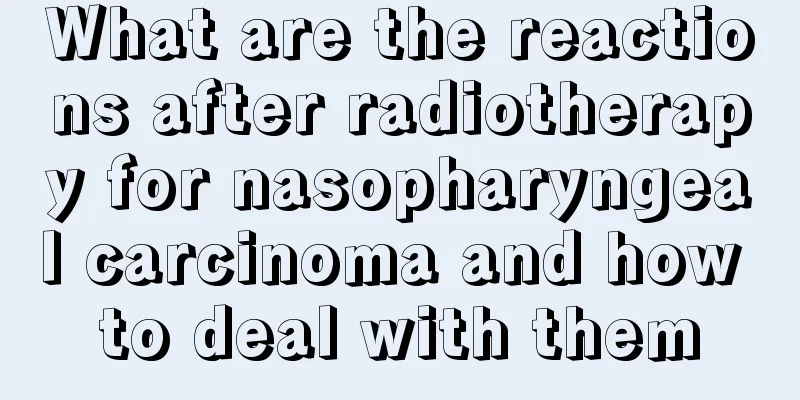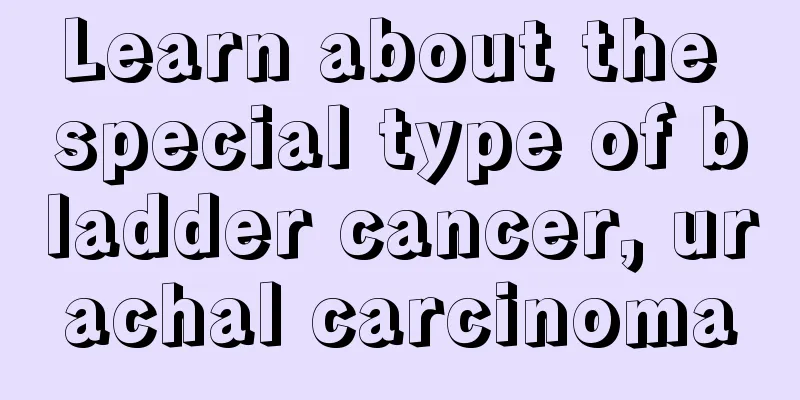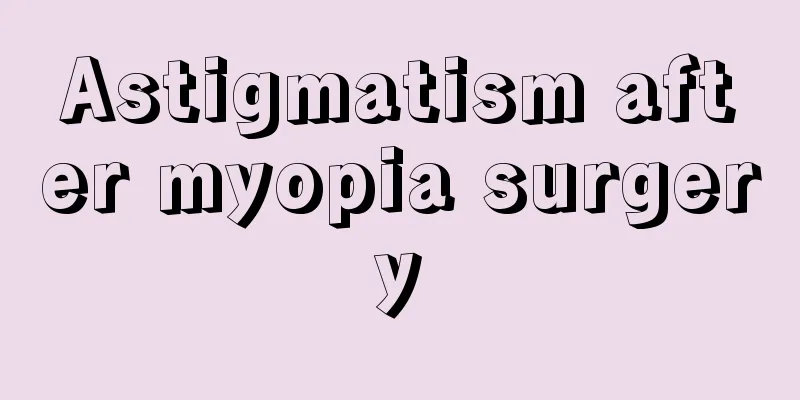What are the reactions after radiotherapy for nasopharyngeal carcinoma and how to deal with them

|
What are the reactions after radiotherapy for nasopharyngeal carcinoma and how to deal with them? 1. Nasopharyngeal carcinoma is one of the most common malignant tumors in my country. It is more common in southern provinces such as Guangdong, Guangxi, Hunan, Fujian, and Jiangxi. The incidence rate in men is 2 to 3 times that in women. The age distribution of reported cases in my country ranges from 3 to 90 years old, but 30 to 50 years old is the high-incidence age group. 2. The best treatment for most cancers is surgery, but nasopharyngeal cancer is different from other cancers. After suffering from nasopharyngeal cancer, doctors generally use radiotherapy to treat it. Radiotherapy is also considered to be the first choice treatment option for nasopharyngeal cancer. 3. The reason why radiotherapy is the best treatment for nasopharyngeal carcinoma is that most nasopharyngeal carcinomas are poorly differentiated squamous cell carcinomas, which are highly malignant and easily invade the surrounding tissues of the nasopharynx and metastasize to the cervical lymph nodes, making them difficult to completely remove by surgery. The nasopharynx is located in the center of the head, is relatively hidden, and is adjacent to important organs, tissues, cranial nerves, blood vessels, etc. The surgical exposure is extremely limited, and the surgery is very likely to damage the surrounding tissues. The risk of surgery is relatively high, and it is even more impossible to perform continuous large-scale resection of the nasopharyngeal tumor and the cervical lymph drainage area. Therefore, the surgical treatment of nasopharyngeal carcinoma alone is not effective. 4. At the same time, since 95% of nasopharyngeal carcinomas are poorly differentiated squamous cell carcinomas, they are highly sensitive to radiation. Radiotherapy can easily include the primary lesions of nasopharyngeal carcinoma and the cervical lymph node drainage area in the irradiation field. The radiotherapy has a good effect, and its short-term effect can reach more than 90%. The overall five-year survival rate after radiotherapy can reach more than 50%, among which the patients in stage I and II are 95% and 78% respectively. The summary of the treatment of recurrent nasopharyngeal carcinoma also shows that re-radiotherapy still has a certain therapeutic value. |
<<: Can stomach cancer be cured
Recommend
You need to know the effects and functions of frankincense
Frankincense is one of the common Chinese medicin...
How long can a person with thyroid cancer live
How long a person with thyroid cancer can live wi...
What to prepare before giving birth
For pregnant women, no one can understand the ant...
What's wrong with numb back muscles
There are actually quite a lot of muscles in the ...
How to remove oil stains from white clothes
Many friends usually prefer to wear white clothes...
Is the breath of nasopharyngeal cancer patients contagious?
Nasopharyngeal cancer is a disease that troubles ...
I have a poor appetite in summer, so why do I still gain weight?
The scorching heat makes me lose interest in eati...
What should I do if the air from the air conditioner smells bad?
Air conditioners are very common household applia...
Can benign bone tumors be left untreated?
Tumors are an increasingly common disease in our ...
Are little red ants harmful to humans?
We all know ants. Ants are the most united race a...
What kind of exercise can I do if I have nasopharyngeal cancer
What kind of exercise can you do if you have naso...
3 recovery methods for advanced prostate cancer
Many prostate cancer patients lose confidence in ...
What should you pay attention to if you have allergic asthma?
Allergic asthma is a relatively stubborn disease ...
What can’t you eat for vascular headaches? What are the effects?
Eating is the most direct way for the human body ...
Does mint leaves have a flavor?
Mint leaves have the effects of strengthening the...









